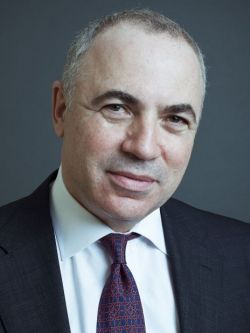
Felix Kugel
Vice-president & Managing Director
ManpowerGroup Russia & CIS
What percentage of your workforce is planning to retire in the next five to 10 years and what impact will it have on your organization? This is a key question that should be on the agenda for discussion at management meetings worldwide, as talent shortages worsen and replacements for those exiting the workforce become more difficult to find. The potential loss of productivity and intellectual capital could have a devastating impact on many businesses that are currently unprepared to adapt to the new realities of the aging workforce. And the conundrum on the horizon is that many of the people who have the talent that companies most need to retain are those who have the financial flexibility and employment options to retire or downshift to a more flexible work arrangement.
What to Do
The first priority of today's employers should be forecasting and workforce planning for the future, when much of today's key talent will retire and there will be few available candidates to replace them. Without such critical analysis and planning, it is likely that many companies will find they are incapable of growing their businesses and meeting customer needs because of unexpected and pervasive talent shortages in critical roles. Two of the key reasons that employers are not doing more to try and recruit or retain older workers as part of their talent management strategies are simply that they neither understand how to do so effectively, nor grasp why this should be a high priority for them now.
While employers have done a great deal in recent years to provide a better work-life balance for working parents, they have not yet made sense of what the work-life balance means to the older worker; namely that these individuals expect to work differently in flexible work arrangements where they can work more on their own terms, not the employer's. There is a growing proportion of this population that may be quite willing and able to continue contributing for years to come, if they are engaged and encouraged to do so. The best way to attract older workers is to have jobs they want, and they tend to want part-time jobs.
As talent becomes more difficult to find and retain, it will be essential for employers to optimize talent flow by ensuring the alignment of employees' skills with the needs of the business over the course of each individual's career. This requires strategic recruitment; ongoing assessment of skills, interests and abilities at regular intervals; alignment of abilities with the current and future needs of the business; and making lifelong learning a high priority.
The conundrum of the older workforce lies in the fact that the most in-demand individuals with the strongest skills are also those who have the greatest financial flexibility to retire early or explore other options throughout their careers, and particularly as they grow older. This means that the people who are most needed are also those most likely to leave, taking their skills, knowledge and experience with them. Savvy employers will develop innovative ways of retaining these critically important contributors as long as possible.
Nonetheless, it is inevitable that even the most engaged employees will eventually retire. Managing the talent pipeline to ensure that high-potential employees are identified as potential successors and developed at the same rate as the older workers who are exiting will be an important aspect of workforce management in the future. An effective knowledge transfer plan that is properly executed can make an enormous difference in an employer's ability to retain critical intellectual capital and sustain consistent performance levels in the transition from retiree to successor.
Employers should also consider the employee's well-being during the major life change that is retirement. After all, if the employer is to be a relevant and credible potential part of the individual's future plans for continued employment in any form, it should play at least a minor role in helping the individual to understand their work options, their skills and attributes, and the degree to which the company is willing to work with them to find an acceptable way for the two parties to remain engaged in the future.
The employer should consider providing a pre-retirement decision process for employees as part of the company's career development or employee assistance services. This process, typically delivered via a qualified consultant, will assist employees in deciding if they possess the personal motivation to continue working, as well as gauge their financial, psychological and physical readiness to retire.
As part of this process, the employee will need to explore questions such as:
• Have I been taking advantage of training opportunities in order to ensure my skills are up to date so that I remain relevant to my employer?
• If I continue working, do I want to continue in the same role or try something new?
• If I retire now, do I have the financial means to support myself and my dependents through my (and their) potential remaining lifespan?
• If, at some point in the future, something changes and my government- or employer-paid retirement income is reduced or eliminated, can I still pay my bills or would I need to get a job?
• If I retire completely and then run out of money, will my skills still be sufficient to enable me to find employment 10 or 20 years from now?
Meanwhile, many national governments' funding for pension and social security programs is projected to fall short of the financial requirements because there simply will be too many people receiving funds from the government programs and too few actively engaged in the workforce paying for these programs through their payroll taxes. If a government is seeking to expand employment of older adults within its population to reduce the pension burden, part of the answer appears to lie in its willingness to be an instrument of change and require employers to take action to address the recruitment and retention of older workers through new incentives and stronger requirements.
A Message from The Moscow Times:
Dear readers,
We are facing unprecedented challenges. Russia's Prosecutor General's Office has designated The Moscow Times as an "undesirable" organization, criminalizing our work and putting our staff at risk of prosecution. This follows our earlier unjust labeling as a "foreign agent."
These actions are direct attempts to silence independent journalism in Russia. The authorities claim our work "discredits the decisions of the Russian leadership." We see things differently: we strive to provide accurate, unbiased reporting on Russia.
We, the journalists of The Moscow Times, refuse to be silenced. But to continue our work, we need your help.
Your support, no matter how small, makes a world of difference. If you can, please support us monthly starting from just $2. It's quick to set up, and every contribution makes a significant impact.
By supporting The Moscow Times, you're defending open, independent journalism in the face of repression. Thank you for standing with us.
Remind me later.





